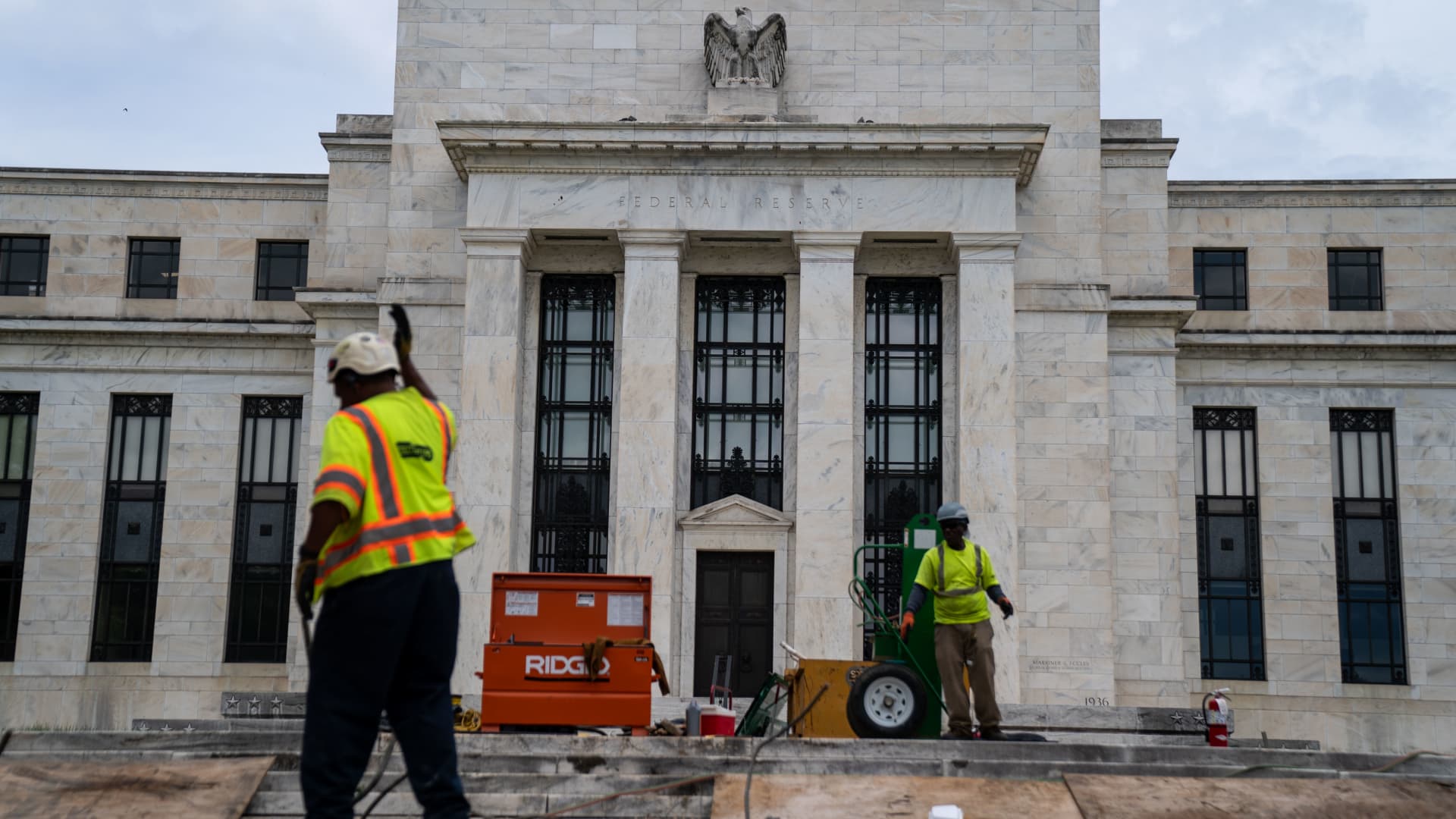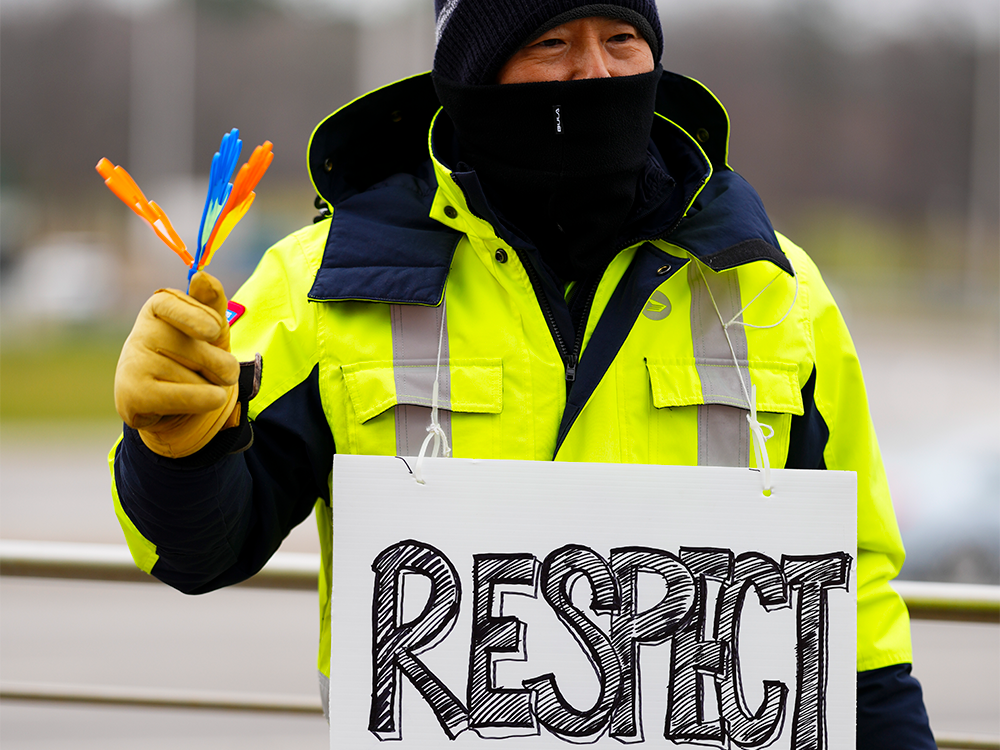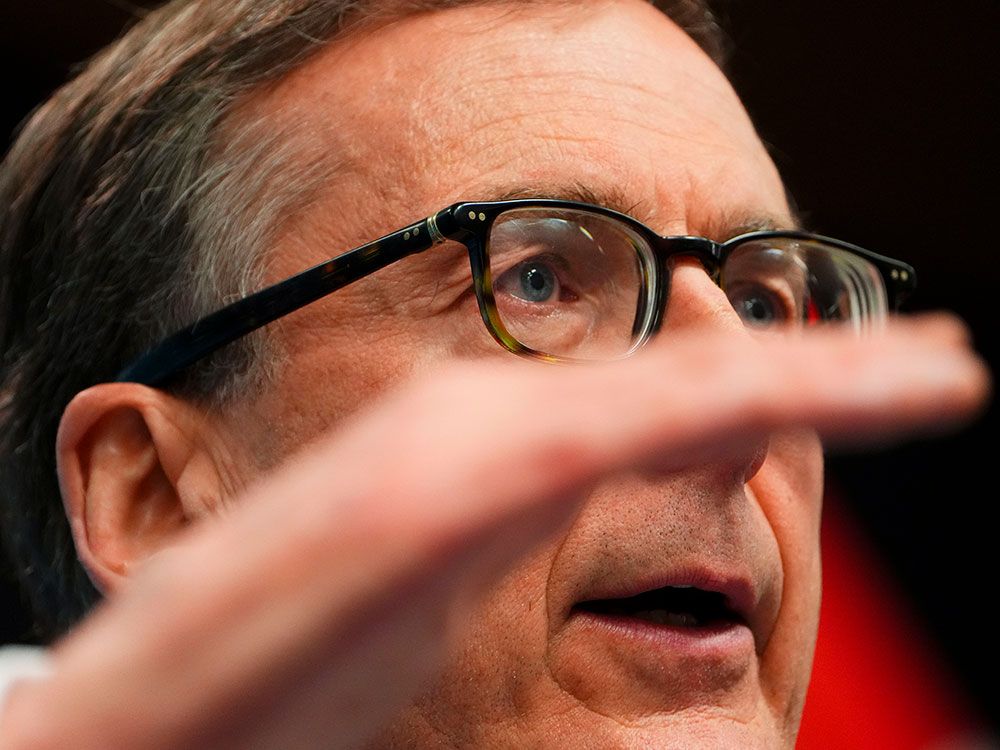Goldman sees a ‘feasible but difficult path’ for the Fed to defeat inflation without a recession

The Federal Reserve’s path to bringing down runaway inflation while keeping the economy from slipping into a major downturn is still open but is getting narrower, according to Goldman Sachs.
As the central bank looks to keep raising interest rates, the economy is teeming with mixed signals: rapidly rising payroll figures against sharply declining housing numbers, falling gasoline prices vs. surging shelter and food costs, and low consumer sentiment against steady spending numbers.
Amid it all, the Fed is trying to strike a balance between slowing things down, but not by too much.
On that score, Goldman economists think there have been clear wins, some losses and a landscape ahead that poses substantial challenges.
“Our broad conclusion is that there is a feasible but difficult path to a soft landing, though several factors beyond the Fed’s control can ease or complicate that path and raise or lower the odds of success,” Goldman economist David Mericle said in a client note Sunday.
Slow growth, high inflation
One of the biggest inflation drivers has been outsized growth that has created imbalances between supply and demand. The Fed is using interest rate increases to try to damp down demand so supply can catch up, and supply chain pressures, as measured by a New York Fed index, are at their lowest since January 2021.
So on that score, Mericle said the Fed’s efforts have “gone well.” He said the rate increases — totaling 2.25 percentage points since March — have “achieved a much-need deceleration” regarding growth and specifically demand.
In fact, Goldman expects GDP to grow at just a 1% pace over the next four quarters, and that’s coming off consecutive declines of 1.6% and 0.9%. Though most economists expect that the National Bureau of Economic Research will not declare the U.S. in recession for the first half of the year, the slow-growth path makes the Fed’s balancing act more difficult.
On a similar count, Mericle said the Fed’s moves have helped narrow the supply-demand gap in the labor market, where there are still nearly two job openings for every available worker. That effort “has a long way to go,” he wrote.
However, the biggest problem remains stubbornly high inflation.
The consumer price index was flat in July but still rose 8.5% from a year ago. Wages are surging at a strong clip, with average hourly earnings up 5.2% from a year ago. Consequently, the Fed’s efforts to halt a spiral in which higher prices feed higher wages and perpetuate inflation have “shown little convincing progress so far,” Mericle said.
“The bad news is that high inflation is broad-based, measures of the underlying trend are elevated, and business inflation expectations and pricing intentions remain high,” he added.
Doubts about the Fed’s policy path
Fighting inflation might require higher rate hikes than the market currently anticipates.
Goldman’s projection is that the Fed raises benchmark rates by another percentage point before the end of the year, but Mericle acknowledged that there is “upside risk” due to “the recent easing in financial conditions, the robust pace of hiring, and signs of stickiness in wage growth and inflation.”
Indeed, former New York Fed President William Dudley said Monday he thinks the market is underestimating the future path of rate hikes and, consequently, the risks of a hard landing or recession.
“The market is misunderstanding what the Fed is up to,” he told CNBC’s “Squawk Box” in a live interview. “I think the Fed is going to be higher for longer than what market participants understand at this point.”
In Dudley’s view, the Fed will keep hiking until it is sure inflation is heading back to the central bank’s 2% target. Even by the most generous inflation measure, the core personal consumption expenditures price index that the Fed follows, inflation is still running at 4.8%.
“The labor market is much tighter than the Fed wants. The wage inflation rate is too high, not consistent with 2% inflation,” he added.
Dudley expects the rates to keep going up until the employment dynamic has shifted enough to get the unemployment rate “well above 4%,” compared to its current level of 3.5%.
“Whenever the unemployment rate has risen by a half percentage point or more, the result has been full-blown recession,” he said.
One measure of the relationship between unemployment and a recession is called the Sahm Rule, which states that recessions do follow when the three-month average of unemployment rises half a percentage point above its lowest over the previous 12 months.
So that would only require a rate of 4% under the Sahm Rule. In their most recent economic projections, members of the rate-setting Federal Open Market Committee don’t see the jobless level breaking that rate until 2024.




